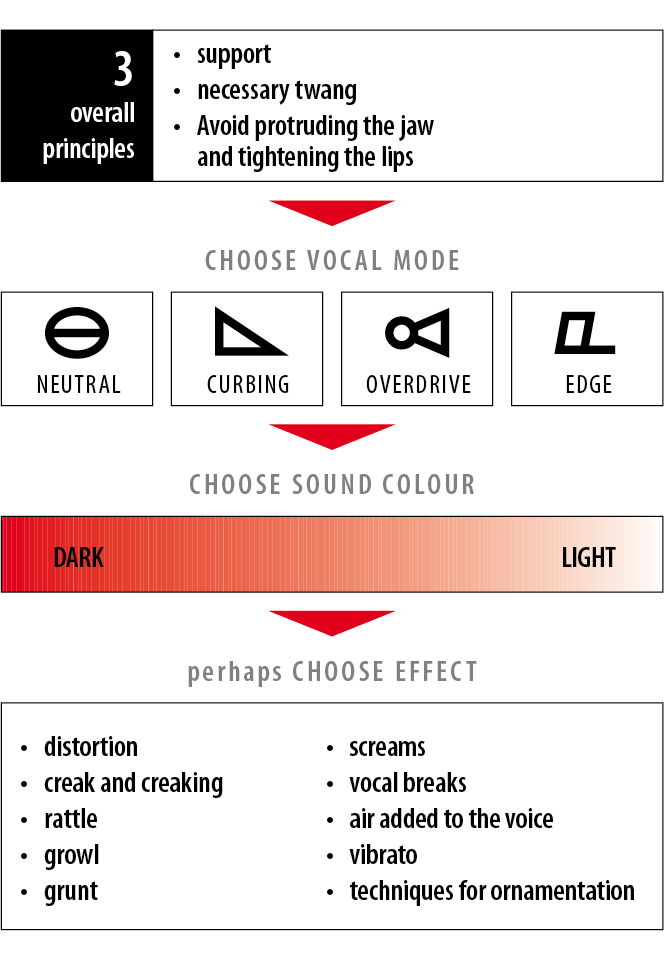About CVT
The Complete Vocal Technique (CVT), is an internationally acclaimed method for vocal coaching. Developed by Cathrine Sadolin a leading voice researcher, vocal instructor, vocal coach, producer, author, singer, composer and instrumentalist.
Cathrine Sadolin is the author of Complete Vocal Technique (considered the leading educational material for teaching professional singing techniques), and the founder of the Complete Vocal Institute (CVI) with branches across the world. Her research across all vocal styles, combined with her own experiences as a professional singer, has inspired innovative thinking across the field.
CVT is divided into four main principles, and by combining parts of these principles singers can produce any sound that a human voice can make. This also makes it possible to pinpoint and correct specific problems. CVI sees all sounds as equal and all sounds can be made in a healthy way. Singing technique is therefore a technique for all styles of singing.
Authorized CVT teachers spend a minimum of 3 years at the Complete Vocal Institute in Copenhagen in order to be able to teach the Complete vocal Technique. There are currently on 5 authorised teachers in the UK
For more information on the complete vocal institute – visit http://completevocal.institute/
Singing is not that difficult and everybody can learn to sing. By combining elements of these four subjects you can produce precisely the sounds you want. You will also be able to pinpoint your specific problems and mistakes, and you can focus on which techniques you wish to work on.
The four main subjects are:
- The three overall principles – to ensure healthy sound production
- The four vocal modes – to choose the ‘gear’ you want to sing in.
- Sound colours – to make the sound lighter or darker.
- Effects – to achieve specific sound effects.
The three overall principles
The three overall principles are the most fundamental and important to perfect. The three overall principles must be obeyed regardless of mode, sound colour, and effect. They are:
1. Support
2. Necessary Twang
3. Avoid protruding the jaw and tightening the lips
The four vocal modes
The use of the voice can be divided into four vocal modes: Neutral, Curbing, Overdrive and Edge (formerly ‘Belting’). The modes differ by having different amounts of metallic character. Most singing problems occur because of incorrect use of the modes. Each mode has a certain character, as well as advantages and limitations.
Neutral |
Neutral is the only non-metallic mode. There is no ‘metal’ in the sound. The character is usually soft, like singing a lullaby. Neutral is the only mode where you can sing using a breathy quality voice without causing damage. The two extremes of Neutral are called ‘Neutral’ and ‘Neutral with air’:
Curbing |
Curbing is the only half-metallic mode. There is a slight ‘metal’ on the notes. Curbing is the mildest of the metallic modes. It sounds slightly plaintive or restrained, like when you moan because of a stomach ache. Curbing can be found by establishing a ‘hold’.
Overdrive |
Overdrive is one of two full-metallic modes. There is a great amount of metal in the notes. The character of Overdrive is often direct and loud, like when you shout ‘hey’ at somebody in the street. Overdrive can be found in the beginning by establishing a ‘bite’. It is usually used when speaking or singing loudly in the low part and middle part of the voice.
Edge |
Edge (formerly ‘Belting’) is the other full-metallic mode. There is a great amount of metal in the notes. The character of Edge is light, aggressive, sharp, and screaming, like when you imitate a diving airplane. Edge can be found by twanging the epiglottic funnel (e.g. sounding like a duck).
Sound Colour
All modes can be lightened or darkened, though some more than others. The sound colour is created in the vocal tract, which is the space above the vocal cords extending to the lips and including the nasal passages. The form and size of the vocal tract is of great importance to the sound colour. The shape of the vocal tract can be altered in many directions so there are many ways of changing the sound colour of your voice.
- Shape of the epiglottic funnel
- Position of the larynx
- Shape of the tongue
- Shape of the mouth
- Position of the soft palate
- Opening or closing of the nasal passages
Each of these factors can and should be trained individually in order to get to know each factor’s influence on the sound colour. Once you can control each factor individually they can be combined in different ways to achieve different sound colours.
Effects
These are sounds which are not connected to melody or text but are sounds that underline the expression or style of a singer. Many effects are produced in the vocal tract. All singers are different. Consequently, every effect must be specifically designed to each singer, taking into account their anatomy, physiology, fitness, energy level, and temperament.
CVT Overview


Cathrine Sadolin

